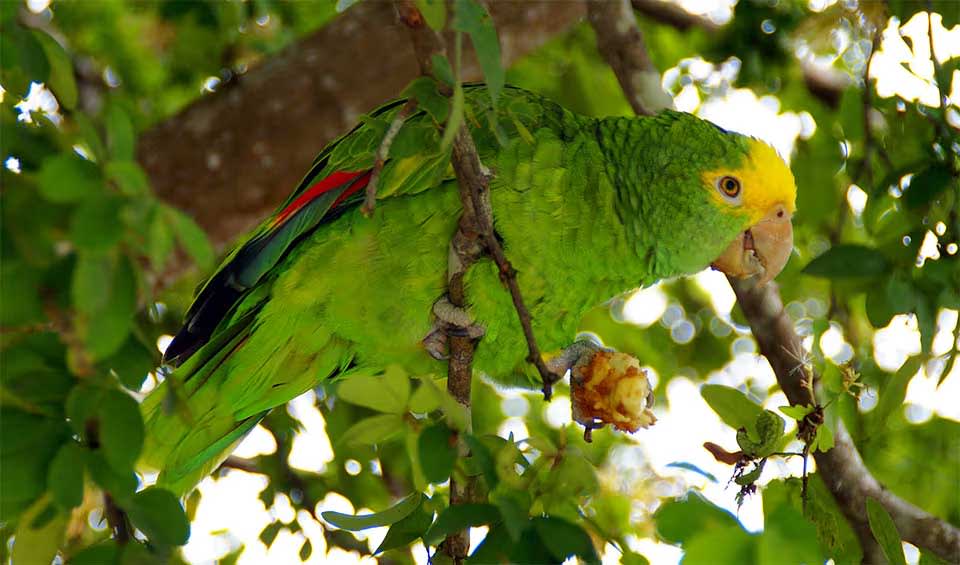Native to the lush rainforests of Central and South America, it is indeed a spectacle to behold with its vibrant plumage and charismatic personality. Sporting a brilliant crown of yellow feathers atop its head and neck, which contrasts vividly with its emerald-green body, this parrot commands attention wherever it goes.
Renowned for its exceptional intelligence and sociable nature, the Yellow-headed parrot is not only a sight to behold but also a fascinating companion. These highly social birds thrive in flocks, where they engage in intricate social behaviors and communicate through a diverse range of vocalizations. In addition to their natural calls, they possess an impressive ability to mimic human speech, captivating bird enthusiasts and pet owners alike with their ability to mimic words and phrases.
Beyond their charm and intelligence, Yellow-headed parrots play a vital ecological role as seed dispersers in their native habitats. With their strong beaks, they crack open seeds and fruits, inadvertently scattering seeds as they feed across the forest canopy. This dispersal of seeds contributes to the regeneration of plant species and the maintenance of forest ecosystems, ensuring the survival of a diverse array of flora and fauna.
Despite their importance to the ecosystem, Yellow-headed parrots face numerous threats to their survival. Habitat loss, primarily due to deforestation and urbanization, poses a significant risk to their populations, as large tracts of their natural habitat are cleared for agriculture and development. Additionally, they are vulnerable to capture for the illegal pet trade, further exacerbating their decline in the wild.
Distribution
 Belize
Belize Guatemala
Guatemala Honduras
Honduras Mexico
MexicoAnything we've missed?
Help us improve this page by suggesting edits. Glory never dies!
Suggest an editGet to know me
Terrestrial / Aquatic
Altricial / Precocial
Polygamous / Monogamous
Dimorphic (size) / Monomorphic
Active: Diurnal / Nocturnal
Social behavior: Solitary / Pack / Herd / Flock
Diet: Carnivore / Herbivore / Omnivore / Piscivorous / Insectivore
Migratory: Yes / No
Domesticated: Yes / No
Dangerous: Yes / No




